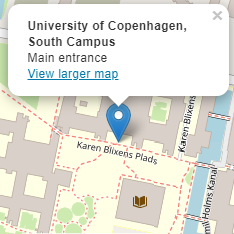Breaking and Creating
The Contemporary Iconoclasm of the Islamic State
Public defence of PhD thesis by Terne Thorsen.
The dissertation explores, what it means to destroy images today. By studying the destruction of cultural heritage by the Islamic State in Iraq and Syria from 2014 and 2016 and the images they have produced depicting their actions, this dissertation examines the iconoclastic practices of the Islamic State and places them within the history of iconoclasm.
The dissertation proposes that contemporary iconoclasm is more focused on the images it creates through destruction rather than the images it destroys. The dissertation further suggests that iconoclasm should be seen as a process of sign transformation and a struggle over symbolic meaning rather than simply the breaking of objects. In turn, the dissertation argues that the Islamic State's attacks on and transformations of objects and sites proclaimed as cultural heritage by shifting powers of imperialism, colonialism, nationalism, and globalism, should be viewed as a contestation of the differing meanings and purposes that over time have been projected onto such objects and sites. In this way, the study contends that the very elevation of an object to the status of “cultural heritage” can indeed make it a target of iconoclasm.
The dissertation is divided into three main parts. The first part consists of three chapters, which presents the historical, methodological, and theoretical background for the dissertation’ study of the Islamic State’s iconoclasm. The second part consists of five analytical chapters, which provide close readings of a sample of the Islamic State’s depiction of their deliberate destruction of cultural heritage. Each chapter focuses on specific aspects of the group’s iconoclasm and together they provide a picture of the development of the group’s use of iconoclasm. Consisting of two chapters and a conclusion, the third part zooms out and discusses what the actions of the Islamic State can tell us about contemporary iconoclasm.
The dissertation’s analyses suggests that the images created by the Islamic State should be understood as a key part of their iconoclastic actions and not a documentation of them.
Departing from the hypothesis that contemporary iconoclasm is more focused on the images it creates than the images it destroys, the dissertation evidences that the image-making aspect of the Islamic State’s iconoclastic practice have affected the ways in which the group have damaged and destroyed their targets. However, throughout the dissertation it also become clear that this is not something that defines contemporary iconoclasm specifically as iconoclasts’ communication of their own actions has always been a part of iconoclastic practice.
Through these studies, the dissertation contributes to both the understanding of the Islamic State’s destruction of cultural heritage and the way that iconoclasm is performed today. Furthermore, it contributes to current academic discussions on topics such as the use of cultural heritage in wars and conflict, the effect of global heritage politics, and the legitimacy of iconoclasm as political expression and protest.
Assessment committee
- Associate professor Solveig Gade, Chair (University of Copenhagen)
- Associate professor Jacob Lund (Aarhus University)
- Associate professor Stacy Boldrick (University of Leicester)
Head of defence
- Assistant professor Amalie Skovmøller (University of Copenhagen)
Copies of the thesis will be available at:
- Copenhagen University Library, KUB South Campus, Karen Blixens Plads 7
- The Royal Danish Library ("The Black Diamond"), Søren Kierkegaards Plads 1

